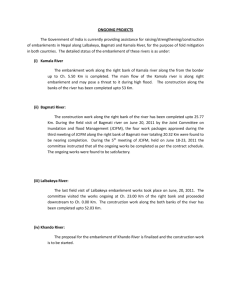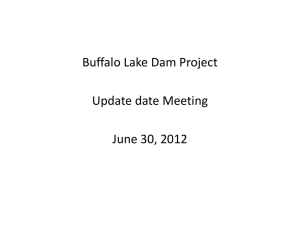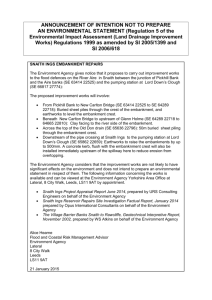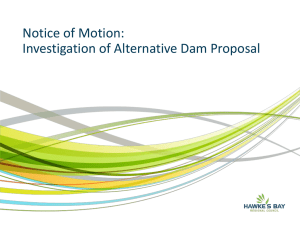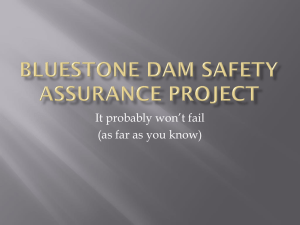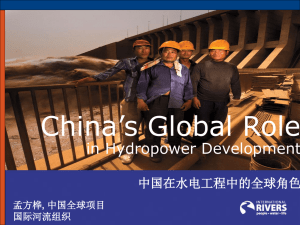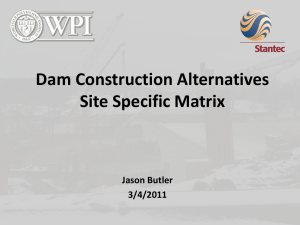Earth and Rockfill Dams - sa
advertisement
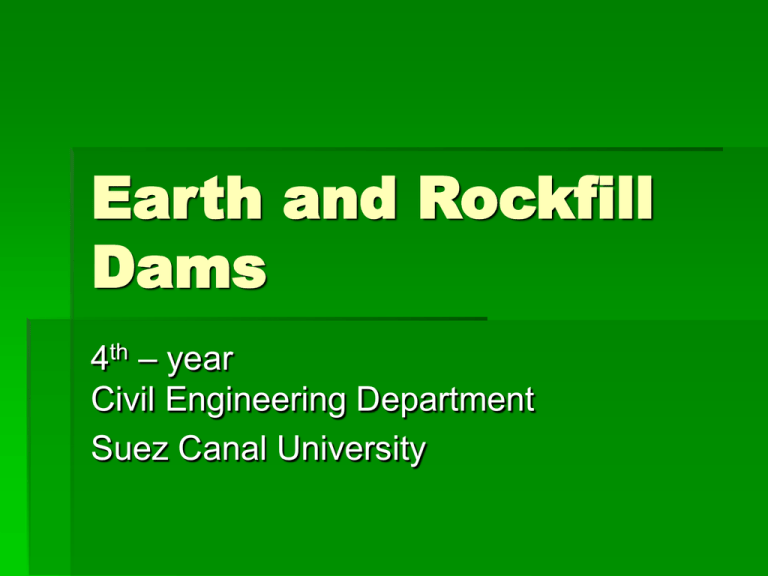
Earth and Rockfill Dams 4th – year Civil Engineering Department Suez Canal University Types of Earth Dams - Depending upon the method of construction: 1- Rolled fill dam. 2- Hydraulic fill dam. 1- Rolled fill dam In the rolled fill dam, the embankment is constructed in successive, mechanically compacted layers by “rollers”. 2- Hydraulic fill dam In the case of Hydraulic fill dam, the materials are excavated, transported and placed by hydraulic methods. Rolled-fill dams Rolled-fill earth dams can be sub-divided into: 1- Homogeneous embankment type. 2- Zoned embankment type. 3- Diaphragm embankment type. 1- Homogeneous embankment type A purely homogenous type earth dam is composed of a single kind of material, usually impervious or semi-impervious. Can be used for low to moderate heights 1- Homogeneous embankment type A modified homogeneous section in which internal drainage system (horizontal filter drain or rock toe) is provided Advantages: controls the action of seepage, so as to permit much steeper slopes. 2- Zoned embankment type Zoned embankment type earth dam is the one in which the dam is made up of more than one material. Consists of: 1- central impervious core 2- Shells: flanking the core and more pervious 3- transition zone (optional) 4- drainage system 2- Zoned embankment type Function of shell layer: 1- give stability to the central core. 2- distribute the load over a larger area in the foundation. 3- The upstream pervious zone affords stability against rapid drawdown 4- the downstream pervious zone acts as a drain to control the line of seepage 3- Diaphragm type embankment A thin diaphragm of impervious material is provided to check the seepage. 3- Diaphragm type embankment Material: impervious soil, cement concrete, bituminous concrete. Types: - Central vertical core - a blanket at the upstream face 3- Diaphragm type embankment Difference between a diaphragm type and zoned type: The thickness of the diaphragm is less than 10 m or the height of embankment. Section of an earth dam Empirical assumptions shall be made for: 1- Top width. 2- Free board. 3- Upstream and downstream slopes. 4- Central Impervious core. 5- Downstream Drainage system. 1- Top width 2- Free board Free board is the vertical distance between the crest and the reservoir level. Depends on Height and whether there is a spillway on the dam or not. 3- Upstream and downstream slopes Assume upstream slope 3:1 and downstream slope 2.5:1 or use the table given below: 4- Central impervious core 1- The thickness of the core at any elevation is not less than the height of the embankment at that elevation. 2- The width of the core at the crest of the dam should be a minimum of 3 m 5- Downstream drainage system Types of drains: 1- Toe drains 2- Horizontal blanket drains 3- chimney drains 5- Downstream drainage system

